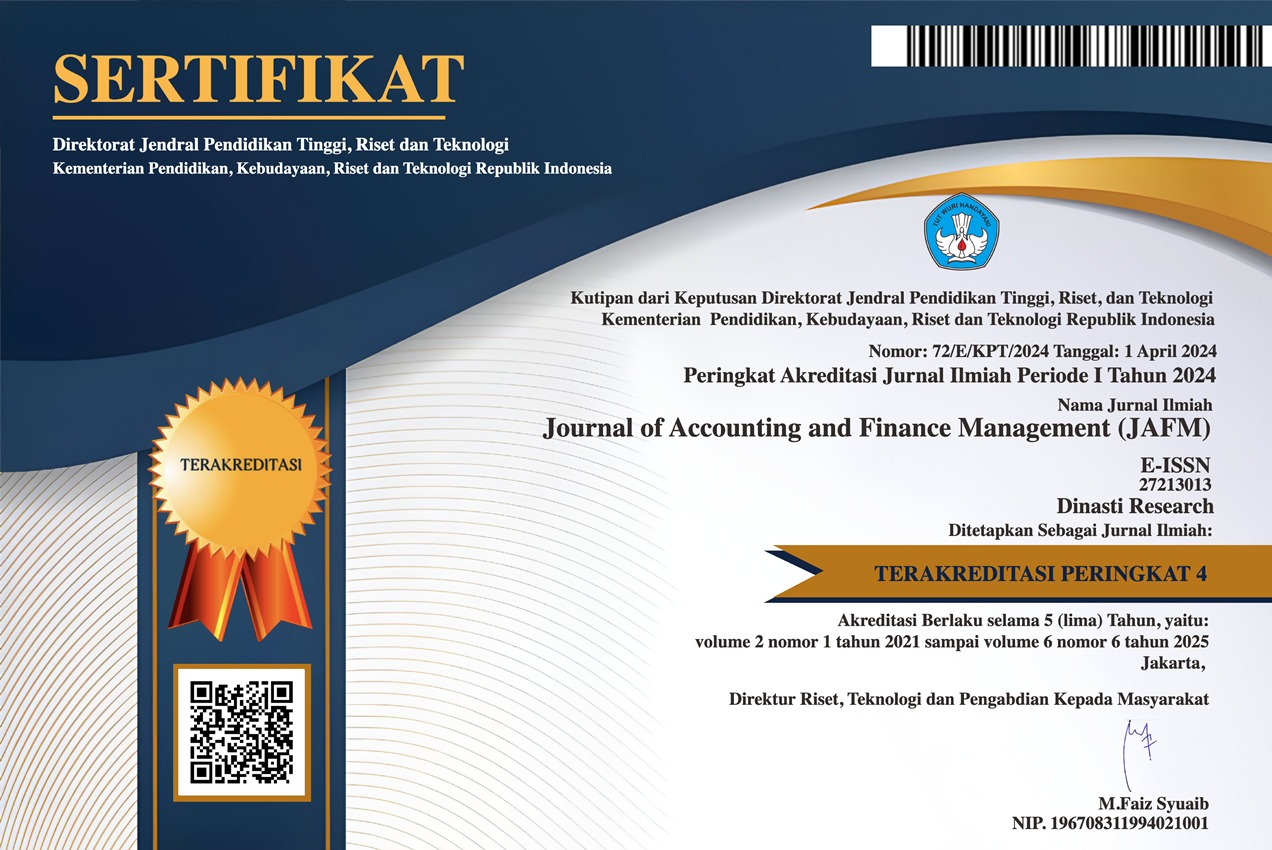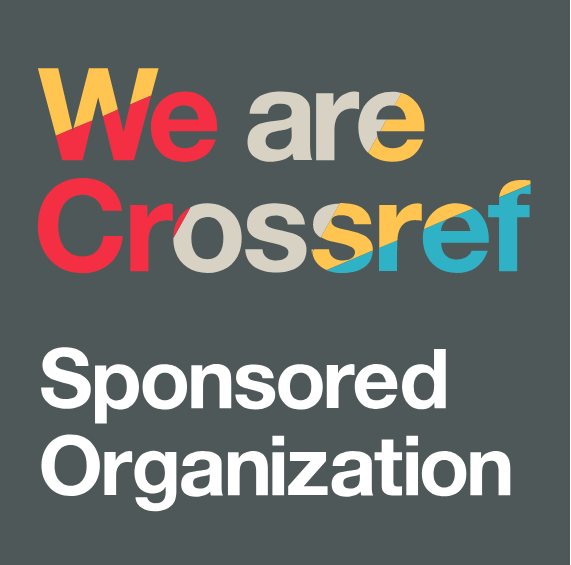Factors that Influence Customer Satisfaction and Loyalty of ULaMM At PT. serang Branch Civil National Capital
DOI:
https://doi.org/10.38035/jafm.v4i3.239Keywords:
atisfaction and loyalty.Abstract
Micro Capital Service Unit (ULaMM) is a service from PT. Civil National Capital which was established with the intent and purpose of empowering micro and small businesses through financing and management services. This business unit operates in business-intensive locations with the intention of being able to easily provide financing to micro and small entrepreneurs. To be able to maintain and increase customers, companies must strive to create customer satisfaction and so that customer loyalty can also be created. This study aims to examine the effect of service quality, ULaMM Regular product quality on customer loyalty through customer satisfaction at PT. Serang Branch Civilian National Capital. This study uses a quantitative approach with Structural Equation Modeling (SEM) using the PLS program. The Sobel test was conducted to determine the effect of mediation or intervention. The unit of analysis used is all ULaMM regular customers of PT. Serang Branch Madani National Capital which has top up at least twice. The sample consists of 63 respondents (saturated sample). Data collection techniques were carried out using a questionnaire. It is hoped that the results of this study can prove that service quality and product quality have a positive and significant effect on customer satisfaction and loyalty.
References
Agung, M.T. & Soliha, E. (2014). Quality of service, image, and satisfaction in an effort to increase fishermen's loyalty.National Seminar Proceedings and Call for Papers, Sustainable Competitive Advantage 4.Purwokerto: Faculty of Economics and Business, Jenderal Soedirman University.
Ajzen, I. (1985). From intention to action: A theory of planned behavior. Control In Action (pp. 11-39). Springer, Berlin, Heidelberg.
Ajzen, I. (1991). The theory of planned behavior. Organizational behavior and human decision processes, Vol. 50(2), 179-211.
Ajzen, I., & Fishbein, M. (1975). Bayesian analysis of the attribution process. Psychological Bulletin, Vol. 82(2), 261
Arikunto, Suharsimi (2016). Research Procedures A Practice Approach, Jakarta: Rineka Cipta
Akbar, M.M. & Parvez. (2009). The impact of service quality, trust, and loyalty on customer satisfaction.Jurnal ABAC,29(1), 24-38.
Aryani, D. & Rosinta, F. (2010). The effect of service quality on customer satisfaction in forming customer loyalty.Journal of Administrative and Organizational Sciences,17(2), 114-126.
Boulding, W., Kalra, A., Staelin, R., & Zeithaml, V.A. (1993). A dynamic service quality process model: from expectations to behavioral intentions.Marketing Research Journal,30(1), 7.
Dimitriades. (2006). Customer satisfaction, loyalty, and commitment in service organizations.Management Research News,29(12), 782-800.
Ghozali, I. (2011).Multivariate analysis application with IBM SPSS 19. Edition 5 program. Semarang: Diponegoro University Publishing Agency.
Lumintang, G. & Rotinsulu, J.J. (2015). Analysis of product quality and service quality on customer satisfaction at Holland Bakery Boulevard Manado.EMBA Journal,3(1), 1291-1302.
Nursiana, A. (2015). The influence of internet banking, service quality, product reputation, location on customer loyalty through customer satisfaction as an intermediary. Journal of Finance and Banking,19(3), 450-462.
Setiawan, H. (2016). The influence of service quality, perceived value and trust on the satisfaction and loyalty of mobile banking service users.Journal of Finance and Banking,20(3), 518-528.
Salim, Agus (2018). The Influence of Relationship, Service Quality, Complaint Handling, and Image on Satisfaction and Loyalty (Study on Customers of BUMN Banks in Jakarta).Dissertation. Postgraduate Management Science Doctoral Program, Faculty of Economics and Business, University of Brawijaya Malang.
Sudaryanto & Hanim, A. (2002). Evaluation of MSME Readiness Towards Asean Free Market (AFTA): Perspective Analysis and Theoretical Review. Journal of Management Accounting Economics, Vol 1 (2): 1-9.
Sudaryanto, Ragimun and Wijayanti, Rahma Rina. (2011). MSMEs Empowerment Strategy Facing the Free Market. Researcher at the Fiscal Policy Agency, Ministry of Finance of the Republic of Indonesia.
Sugiyono (2017). Quantitative Research Methods, Qualitative and R&D. London: Alphabet.
Sugiyono (2017). Statistics For Research. London: Alphabet.
Sugiyono (2017). Administrative Research Methods. London: Alphabet.
Suharsaputra, Uhar (2018). Research Methods: Quantitative, Qualitative, and Action. Bandung: PT. Aditama's reflection.
Sukmalana, Soelaiman (2008). Methods and Techniques for Writing Scientific Papers (Theses and Dissertations). First Edition, First Printing. Jakarta: Suryadharma University.
Tjiptono, Fans (2018). Principles and Application of Marketing Strategy. Yogyakarta: Andi Offset.
Tjiptono, F. (2018). Service Management. Yogyakarta: Andi Offset
Yulianti, F. (2013). The Effect of Service Quality on Savings Customer Satisfaction at Bank Panin TBK KCP A. Yani Banjarmasin.Spread Journal,3(2), 87-100.
Widya Chitami Putri. (2018). The Effect of Service Quality and Satisfaction on Outpatient and Inpatient Loyalty at Batam Authority Hospital. Thesis. Widyatama University, Bandung
Downloads
Published
How to Cite
Issue
Section
License
Authors who publish their manuscripts in this journal agree to the following conditions:
- The copyright on each article belongs to the author(s).
- The author acknowledges that the Journal of Accounting and Finance Management (JAFM) has the right to be the first to publish with a Creative Commons Attribution 4.0 International license (Attribution 4.0 International (CC BY 4.0).
- Authors can submit articles separately, arrange for the non-exclusive distribution of manuscripts that have been published in this journal into other versions (e.g., sent to the author's institutional repository, publication into books, etc.), by acknowledging that the manuscript has been published for the first time in the Journal of Accounting and Finance Management (JAFM).




























